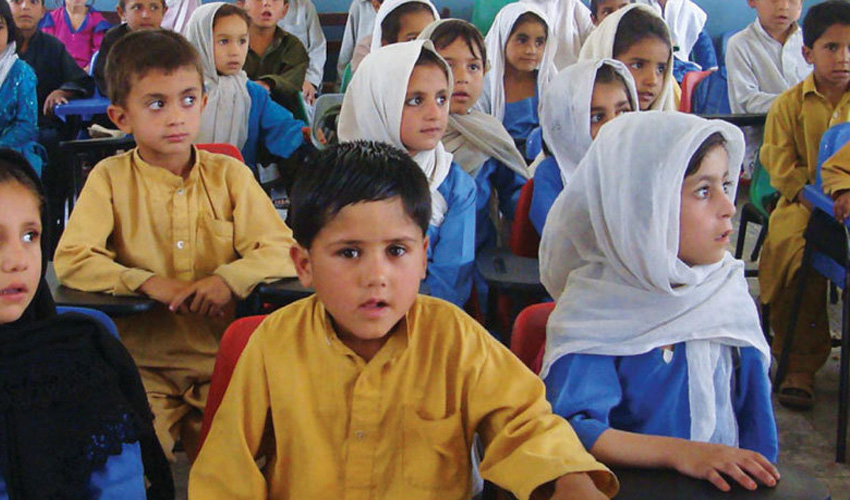The Ministry of Education revealed that as many as 26.2 million children in Pakistan are out of school. This is a revelation to the National Assembly that underlines a grave educational emergency for immediate intervention.
The data published shows a huge discrepancy in education. From the 5 to 9-year-olds, there are 17.74 million children out of school. Of these, 4.97 million are boys, while 5.81 million are girls. That girls are more out of school at this age group presents a disturbing inequality in early childhood education opportunities. Lack of early educational experiences has serious long-term implications for the development and future learning opportunities of children.
When children reach the middle level of schooling, the crisis continues to escalate. For example, out of 4.93 million children out of school aged between 10 and 12 years, males consist of 2.11 million, while females reach 2.83 million. This datum underlines a problem indicative of high gender disparity; females bear the greater brunt in this phase of education.
It is also grim at the secondary level of education, where 4.55 million children are out of school. Of these, 2.31 million are boys and about 2.24 million are girls. The dropout rate increases with an increase in the age of children, reflecting the presence of strong structural reasons to act as a deterrent to continued enrollment.
The case becomes imperative at the higher secondary education level. According to the explanations given by the Ministry, there are 5.95 million students not receiving education at this level. Out of this total, 2.99 million constitute the male student population, while 2.96 million represent the female lot, thus showing that both genders are almost equally affected at this level.
The high levels of student dropouts and entrenched educational disadvantage are symptoms of deeper systemic issues. Economic challenges are very much at the centre of these; many families, especially poor ones, cannot afford most education-related expenses, which include tuition fees, uniforms, and teaching materials. This economic burden leads children to seek work or stay home to support their families and exacerbates educational inequalities.
Moreover, it is noted that the most serious problems relating to disparity between genders are found in early childhood and middle education. Cultural compulsions often dictate education for boys over girls, hence girls have a higher drop-out rate. Despite recent progress, gender inequality in educational institutions remains a major concern.
Insufficient infrastructure, particularly in rural and remote areas, accounts significantly as a deterrent to access. Most schools in these areas lack basic facilities such as clean water, proper sanitation, and qualified teaching professionals. The absence of a proper learning environment is one of the major reasons for high drop-out rates.
Quality of education is another critical concern. Many schools suffer from outdated curricula, untrained teachers, and a lack of essential resources. Without quality education, students are less likely to stay engaged and complete their schooling.
The educational crisis manifests differently throughout Pakistan. Children residing in rural regions encounter significantly more obstacles than those living in urban areas. In isolated villages, it is common for children to traverse considerable distances to access the closest educational institution, while insufficient transportation infrastructure further deters regular attendance. Moreover, cultural perspectives in certain areas may diminish the importance of education, especially for female students, thereby leading to reduced enrollment figures.
Efforts are being made for such problems, and various initiatives of government and non-government agencies have been in process that make access and infrastructure easier. Initiatives such as the Ehsaas Education Stipend and the National School Safety Program aim to strengthen education in the most disadvantaged areas. Non-government organizations and international bodies also make notable contributions in providing educational aid that includes constructing schools and providing scholarships.
However, all these measures by themselves are not adequate. What is needed to address the educational crisis is an integrated approach: an increase in financial allocations for education, ensuring equity, increasing access, especially in rural areas, and enhancing the quality of education.
This calls for massive development in education infrastructure to quality can be achieved only through concerted effort with increased resources. This, therefore, calls for an investment in teacher training, facilities in schools, and learning materials to provide an enabling environment for learning. Other specific initiatives include providing relevant sponsorship for girl-child education, community sensitization, and awareness creation to narrow the gap in gender disparities.
Expanding the network of schools, transportation, and even creating mobile schools will increase access for children in very remote areas. Whereas updating curricula, investment in teacher development, and usage of modern teaching methods might increase standards, they might also help reduce dropout rates.



























